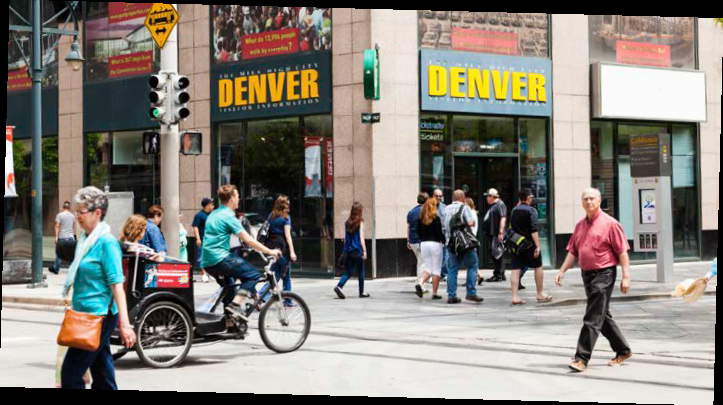The American dream is changing. Remember that house on a quiet cul de sac, located miles from the office, with the white picket fence and plush green lawn? We’ve been idealizing that lifestyle and upping the size of single-family homes for the past century. Big houses still sprout in suburbs today, but with Colorado facing major demographic changes in the coming decades, trends are shifting away from that traditional suburban model and ushering along a likely shift in water use.
“Change is noticeable,” says Ken Schroeppel, an instructor in urban and regional planning at the University of Colorado, Denver. “After decades of center cities losing population and struggling to capture their fair share of investment against their suburban neighbors, we’re now seeing, throughout the country and particularly in Denver, where the center city is once again back and thriving and growing.”
More people are lusting after the amenities that city life provides: walkability; access to public transportation; shorter commutes; proximity to restaurants, grocery stores, bars and more—those amenities might be replacing that picket-fence dream. And Coloradans young and old are looking at housing dierently when making their selections.
“The [housing] market going forward will really be driven and dictated by two ends of the homebuyer population: It’s the first-time homebuyers, the young millennials, on one end and the empty-nester, active adult buyers on the other end,” says John Covert, regional director of Metrostudy, which tracks, analyzes and reports on development in 11 counties along Colorado’s Front Range. “I guess in some ways you could say that the needs [of those two generations] are similar,” says Covert.
Millennials are still young, ages 15 to 35, and haven’t clearly defined their housing preferences. They’ve been set back by the recession, are often saddled with student debt, and are generally more delayed than previous generations in everything from work to marriage to purchasing a home and having a family. Those millennials that are independent are primarily renting and enjoying urban amenities, causing first-time homeownership rates to fall and people to crowd cities. “We have this generation [the millennials] that’s interested in urban environments and diversity and all sorts of cultural things,” says Schroeppel.
But will those values stick when millennials are ready to buy homes? It may be too early to say. In many urban areas, Denver included, the cost of land is high, which can lead to unaordable housing. This presents a dilemma, particularly for first-time homebuyers seeking city life but in need of extra space for their growing families. It’s a tradeo between the expense of urban land and more suburban or rural development. “[Millenials] will get married, they will have kids, they will seek out the best schools or the best house tied to amenities or employment hubs or transportation,” Covert says. “Will they want to move out to the suburbs? That’s the conversation that a lot of homebuilders are having today—trying to crack that code and figure it out.”
Developers are reacting to housing preferences by creating more mixed-use neighborhoods that oer urban-style amenities even in outlying areas. At the same time, they’re appealing to the other end of the age spectrum: Empty-nesters and aging boomers are drawn to many of the same amenities as millenials. Many in this age range are also looking for housing that requires less maintenance, and perhaps costs less. “What builders are trying to appeal to is that aging buyer that’s maybe categorized as an entry-level active adult buyer rather than a high-end active adult buyer—someone that doesn’t have a large disposable income,” Covert says.
In master-planned communities, the new wave of development might feature decreased lot and home size, location along transit lines, and intermixed business and residential uses. Greater housing density and smaller lots will mean smaller lawns, thus less water used for outdoor irrigation. New homes will continue to incorporate energy- and water-smart appliances, while proximity to transportation should shrink both a city’s carbon and its water footprint through decreased fuel consumption.
At the same time, the shift toward city living will continue to be significant, Shroeppel predicts. Urban infill and high-density development result in even less individual outdoor water use, plus a new building in a city center can connect to existing pipes, roads, and water treatment systems, whereas developing a greenfield means building all new infrastructure.
Perhaps lucky for Colorado, urban development is trending. “There’s this incredible energy right now in the city where everything is firing on all cylinders and it’s palpable,” Shroeppel says. “People want to be a part of that, so they move here and they become a part of that change.”


 Print
Print